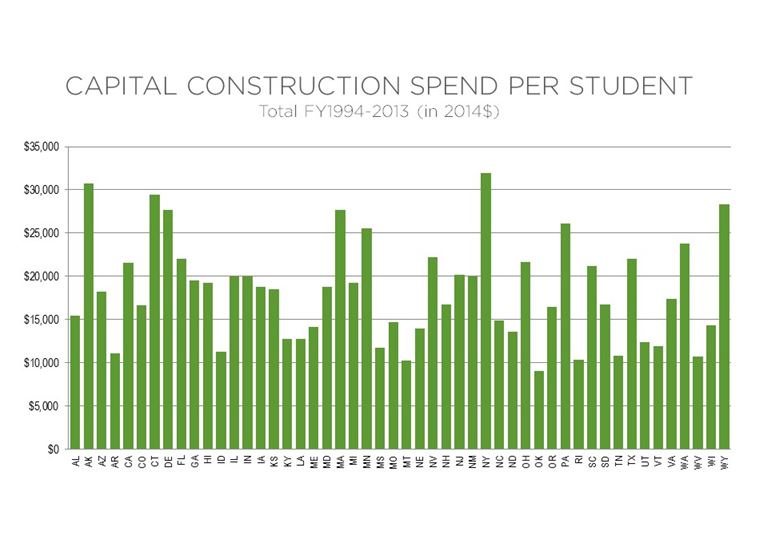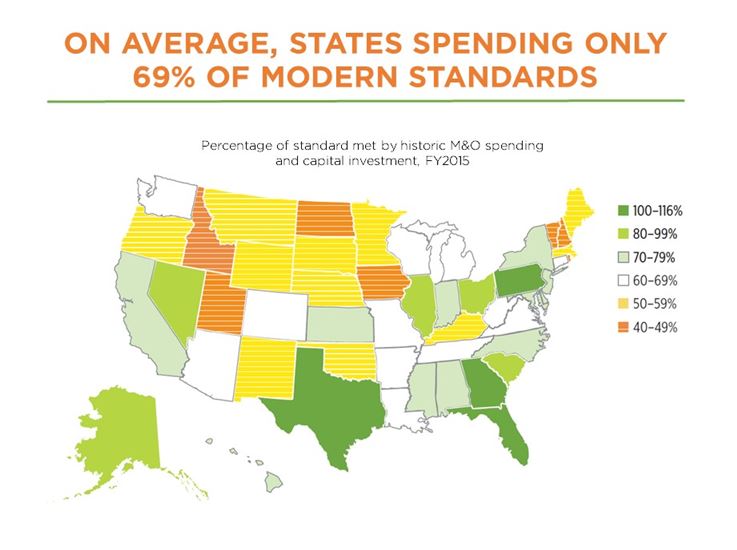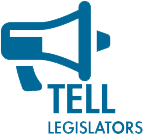Author Archive
California’s Orange County Infrastructure Isn’t Improving
July 21st, 2016 | By: America's Infrastructure Report Card
The Orange County Branch of the American Society of Civil Engineers today released its 2016 Orange County Infrastructure Report Card, grading 12 categories of the county’s infrastructure, resulting in an overall grade point average of “C+.” The Report Card was developed in collaboration with the UC Irvine Civil and Environmental Engineering Affiliates, an advisory group to the UCI Samueli School’s Civil and Environmental Engineering Department. A team of professional engineers from Orange County assessed the 12 categories, including Aviation (A-), Electric Power (C-), Flood Control & Levees (C-), Ground Transportation (C), Natural Gas (B-), Oil (B-), Parks, Recreation & Environment (C+), School Facilities (C), Solid Waste (B), Surface Water Quality (D+), Wastewater (B), and Water Supply (B). This is the fourth Orange County Infrastructure Report Card. The first, released in 2002, gave the county’s infrastructure a GPA of “C;” in subsequent releases in 2005 and 2010, the GPA has stayed constant at a “C+.” “In this first assessment of Orange County’s infrastructure since the 2008 recession, we found that while some areas have improved incrementally, others have declined, leaving our overall GPA stalled for more than a decade,” said Yaz Emrani, P.E., OC Infrastructure Report Card Chair. “Since our infrastructure works as a system, it’s important that Orange County increase investment so that we can move our infrastructure from ‘catching up’ to ‘ready for the future.’” The 2016 Orange County Infrastructure Report Card finds that much of the county’s infrastructure needs additional investment to keep up with demand. Of note:- While commercial traffic at John Wayne Airport approaches the current negotiated passenger limit of 10.8 million annual passengers until 2020, both general aviation and military demand fall short of meeting Orange County’s available capacity.
- Funding shortfalls for needed upgrades to bring regional flood control facilities in the county to its standards continue to be in excess of $2.7 billion.
- Deferred maintenance during the recent recession has exacerbated ground transportation needs. The existing funding sources are inadequate to meet the current and future demand, and it is estimated Orange County needs an additional $133 million annually.
- The condition of school facilities has declined in the past five years due to lack of funding.
- Due to increased volume of stormwater runoff during storm events, existing surface water quality infrastructure in Orange County does not have nearly the capacity to meet wet weather demands.
- Performing continuous and timely maintenance on the infrastructure to prolong use and minimize the need for costly repairs.
- Conducting comprehensive planning and long-term investment to ensure sound decisions about infrastructure.
- Preserving the environment while fostering economic growth and personal mobility.
Florida’s Infrastructure Needs to Keep up with Growth
July 14th, 2016 | By: America's Infrastructure Report Card
 Impact of Florida’s Infrastructure
Impact of Florida’s Infrastructure
Infrastructure is the backbone of Florida’s economy and a necessary part of every Floridian’s day. The Florida Section of the American Society of Civil Engineers released the 2016 Report Card for Florida’s Infrastructure on Thursday, July 14. The report includes an evaluation of the state’s aviation, bridges, coastal areas, drinking water, energy, ports, roads, schools, stormwater, transit, and wastewater (see grades below).
Keeping Up With Growth
One of the key findings from this report is that Florida is growing, and the State’s infrastructure needs a growth spurt of its own to keep up. Recently Florida’s population has grown at a rate of about 1% per year, adding about 1 million people, which is the equivalent of adding a city the size of Jacksonville every 5 years. Some cities and counties are stepping up their efforts, but more needs to be done across the state by every infrastructure owner. The good news is that investments in areas like bridges and smart technology investment solutions seen in ports and airports are raising Florida’s grades. As Florida grows, investing in infrastructure must be Florida’s top priority to continue to be the place people want to live and work as well as attract visitors from around the country and the world.Congratulations USDOT Smart Cities Challenge Winner, Columbus!
June 28th, 2016 | By: America's Infrastructure Report Card
The U.S. Department of Transportation (USDOT) revealed Columbus, Ohio, was the winner of their Smart Cities Challenge, showcasing an innovative transportation strategy made possible through investment in smart city technology. Like ASCE’s #GameChangers project which shows inspiring examples of innovative trends happening with our nation’s infrastructure, all 77 of the proposals submitted to the Challenge from across the country show how much potential can be unleashed with innovative concepts and new ideas. Columbus’ proposal calls for autonomous transit shuttles between neighborhoods and urban centers, expansion of electric vehicle infrastructure, and universal fare cards that allow cardholders to pay for any form of public transit using a variety of payment methods. Columbus and USDOT officials believe these investments will modernize transportation across the city, while opening up greater access to healthcare and jobs for families living in lower income areas. As the winner of the Smart Cities Challenge, Columbus will receive $40 million from USDOT, $10 million from Vulcan, Inc. and $90 million in matching grants from other local private partners to bring their proposal into reality. Raising America’s infrastructure grades starts with great projects like this one in Columbus, but every project should be an opportunity to change the infrastructure game and build the cities of the future. Tell us what’s happening near you to change the infrastructure in, around, and under your city.New Jersey Infrastructure Receives D+ Report Card
June 16th, 2016 | By: America's Infrastructure Report Card
 Today, the 2016 Report Card for New Jersey’s Infrastructure gave an overall D+ grade for the State’s infrastructure. The report evaluated 13 separate components of New Jersey’s infrastructure, all of which were given a grade based on the components’ condition, capacity, funding, future need, operation and maintenance, public safety, resilience, and innovation. The transit and levee components received the lowest grade of D-, while solid waste received the highest grade of B-. The other individual grades were: bridges (D+), dams (D), drinking water (C), energy (C+), hazardous waste (C), parks (D+), ports (C), rail (C), roads (D+), and wastewater (D).
Throughout the report, the New Jersey Section of the ASCE calls attention to numerous challenges confronting the state’s vast and diverse infrastructure, many of which are magnified by the dangerous insolvency facing New Jersey’s Transportation Trust Fund (TTF). Key issues concerning infrastructure in the Garden State include:
Today, the 2016 Report Card for New Jersey’s Infrastructure gave an overall D+ grade for the State’s infrastructure. The report evaluated 13 separate components of New Jersey’s infrastructure, all of which were given a grade based on the components’ condition, capacity, funding, future need, operation and maintenance, public safety, resilience, and innovation. The transit and levee components received the lowest grade of D-, while solid waste received the highest grade of B-. The other individual grades were: bridges (D+), dams (D), drinking water (C), energy (C+), hazardous waste (C), parks (D+), ports (C), rail (C), roads (D+), and wastewater (D).
Throughout the report, the New Jersey Section of the ASCE calls attention to numerous challenges confronting the state’s vast and diverse infrastructure, many of which are magnified by the dangerous insolvency facing New Jersey’s Transportation Trust Fund (TTF). Key issues concerning infrastructure in the Garden State include:
- Of the state’s 6,657 bridges, the report found that 1 in 11 are classified as structurally deficient and the average age of New Jersey bridges is 51 years. More than 40% of the state’s bridges are expected to require repair or replacement in the near future.
- No single agency exists to oversee New Jersey’s 126 miles of levees, despite numerous reports citing significant condition issues with levees across the state.
- 42% of New Jersey’s roadway system is deficient, with many highways now past their anticipated lifespan. Deficient roads are costing the average driver $1,951 each year.
- 213 high and significant hazard dams in New Jersey are in poor or unsatisfactory condition, and hundreds of millions of dollars will be necessary to repair them.
- If the approaching insolvency of New Jersey’s Transportation Trust Fund is not addressed, there will be no permanent revenue source for the billions of dollars of critical investment that is needed in the state’s bridges, transit systems, railways, and roads.
- Establish a long-term funding source for the Transportation Trust Fund. This will generate the funds needed for highway, rail and transit projects.
- As evidenced by the aftermath of Superstorm Sandy, the state needs to continue to invest in resilient infrastructure that can better withstand severe weather events and limit the need for frequent, costly maintenance in the future.
- In order to address infrastructure assets facing delayed maintenance or replacement, the state must implement new technology and updated strategies to prioritize infrastructure investment.
2050 Infrastructure Starts Today
May 30th, 2016 | By: America's Infrastructure Report Card
As part of Infrastructure Week, one of the most compelling conversation topics was the future of infrastructure because to make it happen, the future really has to start being built today. If the trendiest topic today is the driverless car, what infrastructure has to be in place to make that work? If sensor technology is changing how we monitor everything from water to traffic, what will the infrastructure internet of things be able to replace? How can we plan for infrastructure that will lead to the future we want? While we all know that America has their hands full with today’s problems, we also must be realists – planning 2025, 2040 and 2050’s infrastructure starts by stopping endless debating and starting to implement great ideas today. This was the key take-away from the one of the Infrastructure Week events hosted by AEM with Congressman Garret Graves (Infrastructure Week Congressional Co-Chair), Mayor Sly James of Kansas City, Missouri, Ronald De Feo (CEO of Kennametal & Chair and AEM’s Infrastructure Vision 2050), Amanda Eversole (President of Center for Advanced Technology and Innovation), Steve Morrison (Amtrak Account Manager for Siemens Industry, Inc.), and Derek Woodgate (Chief Futurist at The Future’s Lab, Inc.). Mayor James had a great example of getting future infrastructure to work with the new Kansas City Streetcar Project. When they were going to put in a streetcar, they didn’t stop there – they looked at what else could be done while work was being done. This included replacing aging water pipes and installing new fiber. They also implemented new, versatile technology along the route. A great example of this is the kiosks around streetcars that will be able to help citizens with everything from simple answers to reporting incidents. The kiosks have allowed Missouri to use the data collected to create phone apps and fight crime. The project ended up almost completely paying for itself and creating jobs since companies are willing to pay for the data. When we stop thinking of infrastructure as just one project, like a Streetcar, and start taking in the larger view of what can be accomplished and enhanced, we’ll transform our infrastructure and our cities by 2050. Written with an assist by Infrastructure Week intern Nicole ErdelyiInfrastructure Week Events to Check Out
May 12th, 2016 | By: America's Infrastructure Report Card
There’s a great line up of events happening for Infrastructure Week! See what’s happening near you!Infrastructure Week Calendar of Events
Closing America’s Infrastructure Gap
May 9th, 2016 | By: America's Infrastructure Report Card
Infrastructure is the backbone of our economy and when it’s not maintained all Americans feel the effects, but what does that look like in dollars for my family, my business and the overall economy? The American Society of Civil Engineers’ new economic study, Failure to Act: Closing the Infrastructure Investment Gap for America’s Economic Future will be released on May 10th and will highlight exactly how much America’s infrastructure investment gap is impacting the U.S. economy and household income. The report quantifies how the failure to invest in our aging infrastructure impacts the economy, including:- GDP
- jobs
- personal disposable income, and
- business sales.
U.S. School Facilities Are $46B Away from Modern Standards
March 29th, 2016 | By: America's Infrastructure Report Card
Every year the U.S. is spending $46 billion less on school facility construction and maintenance that is needed to keep our kids, teachers and staff in safe and modern facilities. This is the new finding from the State of Our Schools report which looks at the condition of the schools we send 1 in every 6 Americans into every day. Almost half of America’s public school buildings were built to educate the baby boomers – a generation that is now retiring from the workforce. Public school enrollment is projected to gradually increase through 2019, yet state and local school construction funding continues to decline. While what is taught in schools is often the focus of elected leaders, it’s clear that the buildings should also be part of the conversation.
Here are a few charts that show how your state stacks up in funding and supporting modern school facilities.


 Want to find out more? Read the full State of Our Schools report. Read the Washington Post coverage of the new report or take a minute to tell your elected officials who make decisions on schools about this new report.
Want to find out more? Read the full State of Our Schools report. Read the Washington Post coverage of the new report or take a minute to tell your elected officials who make decisions on schools about this new report.

Looking Into Humboldt County’s Water Infrastructure
March 24th, 2016 | By: America's Infrastructure Report Card
 Today the North Coast Branch of the American Society of Civil Engineers released a new 2016 Report Card for Humboldt County’s Water Infrastructure to show the state of the water infrastructure across 19 water systems within Humboldt County, California. The report found that today’s water infrastructure earned a good B grade overall, but to keep a good grade, planning must begin today for the infrastructure that is aging and will need replacement over the next 10 years. The report shows that over the next 5 to 10 years, local agencies need to plan for approximately $90 million in investments to maintain the existing system at its current condition.
ASCE was joined by several owners and operators to release the new report; the speakers included:
Today the North Coast Branch of the American Society of Civil Engineers released a new 2016 Report Card for Humboldt County’s Water Infrastructure to show the state of the water infrastructure across 19 water systems within Humboldt County, California. The report found that today’s water infrastructure earned a good B grade overall, but to keep a good grade, planning must begin today for the infrastructure that is aging and will need replacement over the next 10 years. The report shows that over the next 5 to 10 years, local agencies need to plan for approximately $90 million in investments to maintain the existing system at its current condition.
ASCE was joined by several owners and operators to release the new report; the speakers included:
- Yoash Tilles, P.E. Chair, Report Card for Humboldt County’s Infrastructure
- Cameron Muir, E.I.T, Practitioner Adviser, ASCE North Coast Branch
- Barbara Hecathorn, President, Humboldt Bay Municipal Water District Board of Directors
- George Wheeler, President, McKinleyville Community Services District Board of Directors
- Greg Orsini, General Manager, McKinleyville Community Services District
- Michael Flockhart, Public Works Director, Bear River Band of the Rohnerville Rancheria
- Marcus Drumm, General Manager, Loleta Community Services District
- Mark Lovelace, 3rd District Humboldt County Board of Supervisors



 */ ?>
*/ ?>














